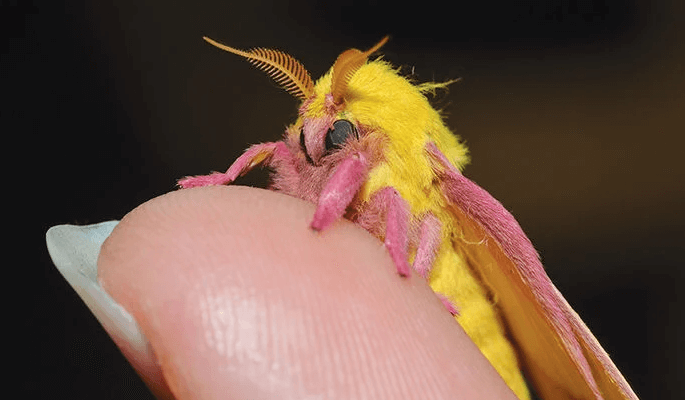Cute:1sfley8ff_E= Rosy Maple Moth

The Cute:1sfley8ff_E= Rosy Maple Moth, characterized by its distinctive pale yellow and pink hues, serves as a captivating example of the intricate relationships between biodiversity and ecosystem dynamics in eastern North America. Its life cycle, encompassing critical stages from egg to adult, reveals important adaptations that enhance its survival in various habitats. Moreover, the moth’s unique behavioral traits contribute to its role within the ecological community. However, the implications of its existence extend beyond mere aesthetics, inviting further exploration into the ecological significance and conservation challenges it faces in a changing environment.
Life Cycle of Rosy Maple Moth
The life cycle of the Rosy Maple Moth (Dryocampa rubicunda) typically progresses through four distinct stages: egg, larva, pupa, and adult, each of which plays a crucial role in the moth’s development and reproductive success.
During the larval stages, caterpillars exhibit voracious feeding habits, essential for growth.
Reproductive habits are established in adulthood, ensuring the continuation of the species through successful mating and oviposition.
Read More Cute:6c9pvhztb8i= Polar Bear
Habitat and Distribution
Preferring deciduous forests and urban areas with abundant oak and maple trees, the Rosy Maple Moth is primarily distributed across eastern North America.
Its habitat preferences are closely linked to the availability of host plants, which are crucial for larval development.
This geographical range extends from southern Canada to southern U.S. states, illustrating the moth’s adaptability to diverse environments within its preferred habitats.
Unique Characteristics and Behavior
Notable for its striking coloration, the Rosy Maple Moth exhibits a unique combination of pale yellow and pink hues that serve both as camouflage and a warning to potential predators.
Its mating rituals involve intricate displays and pheromone release, enhancing reproductive success.
Additionally, the moth employs camouflage techniques, blending seamlessly with the bark of trees, which further aids in evading threats while resting.
Conclusion
The Cute:1sfley8ff_E= Rosy Maple Moth, with its enchanting coloration and intricate life cycle, embodies the delicate balance of nature.
Thriving in diverse habitats, this species showcases remarkable adaptations that facilitate survival and reproduction.
The moth’s striking appearance not only captivates observers but also serves as a masterclass in evolution’s artistry.
In the grand tapestry of the ecosystem, the Rosy Maple Moth stands out as a vibrant jewel, illuminating the forest with its presence and contributing to the rich biodiversity of North America.




